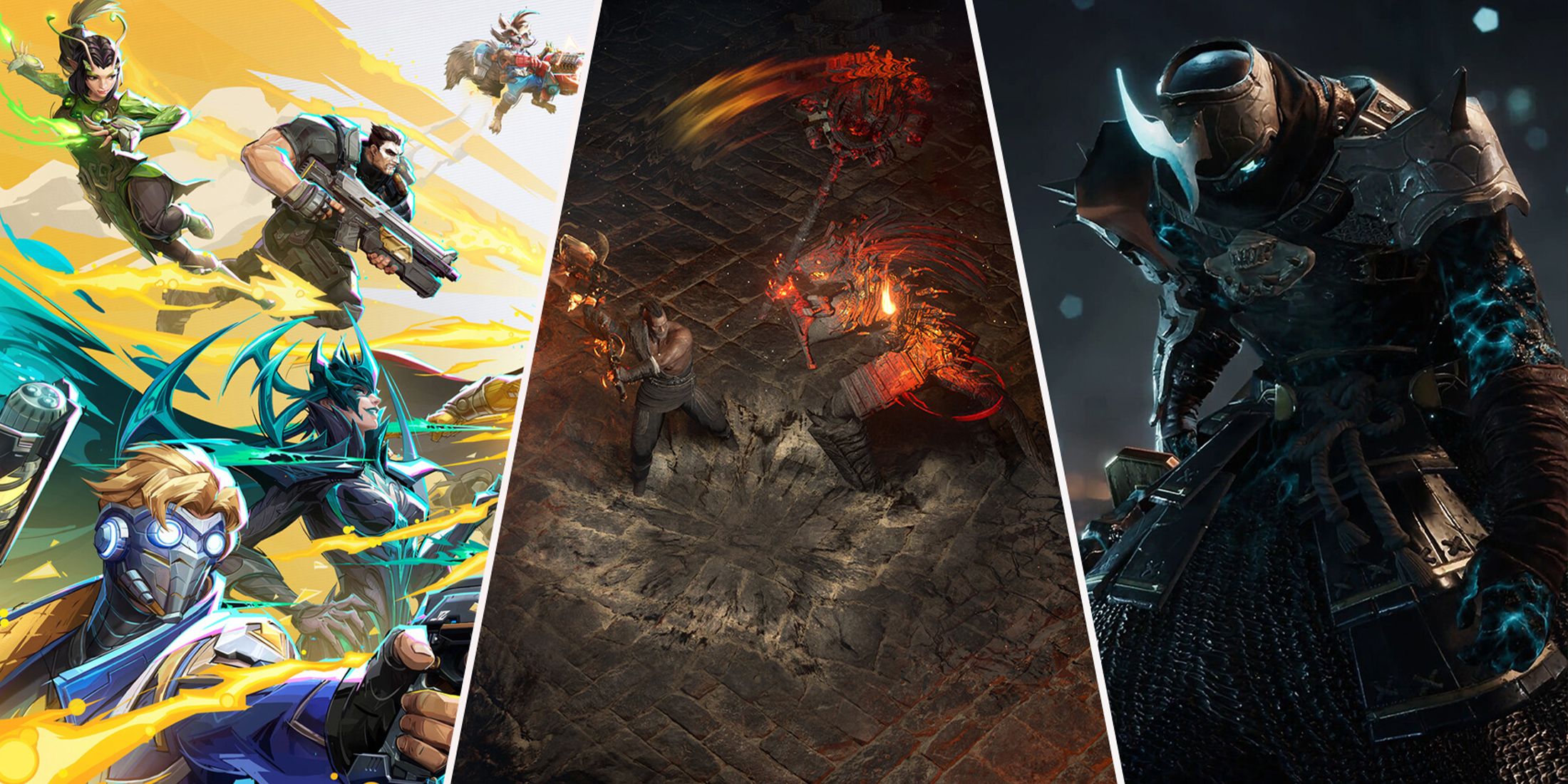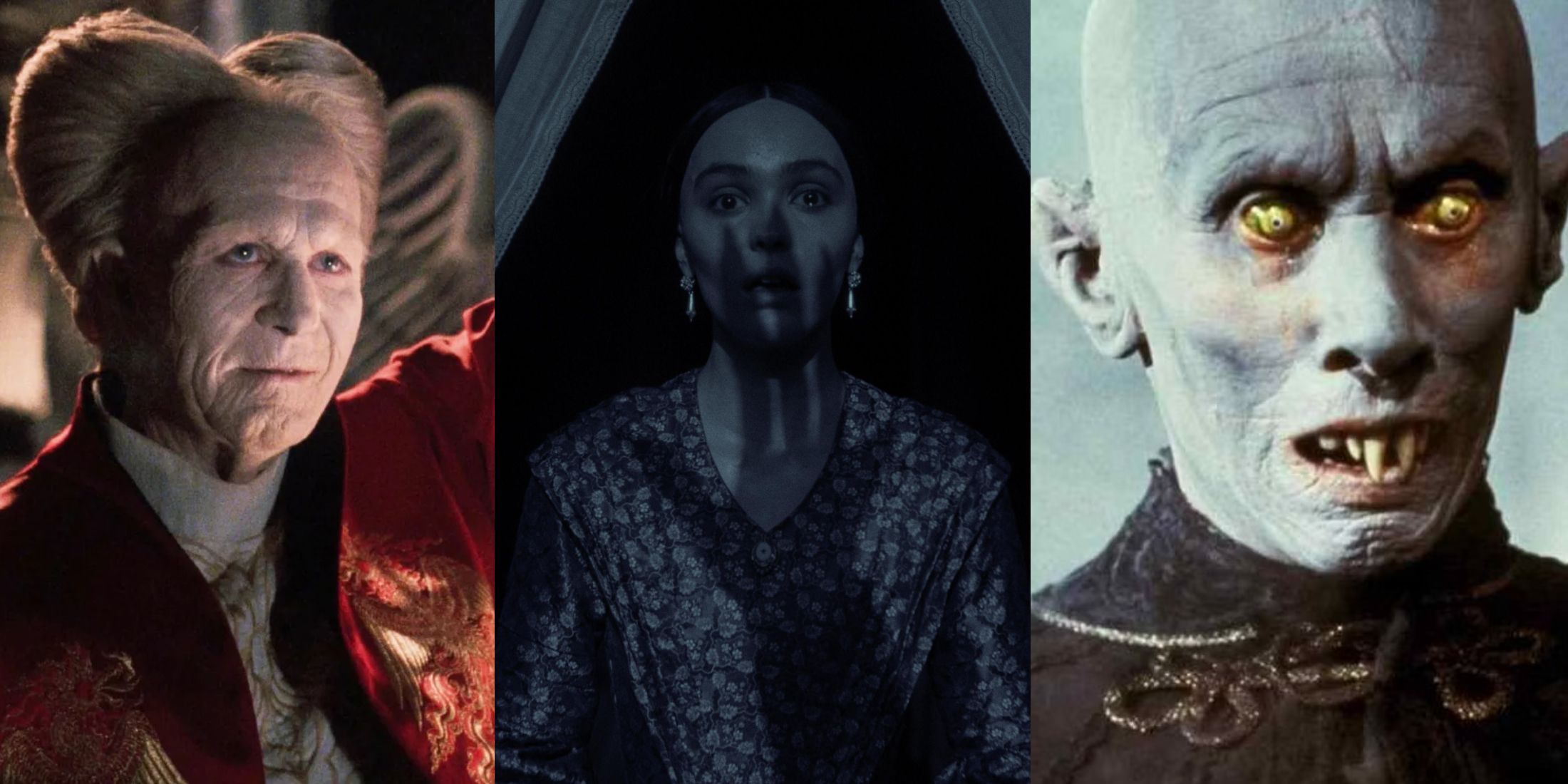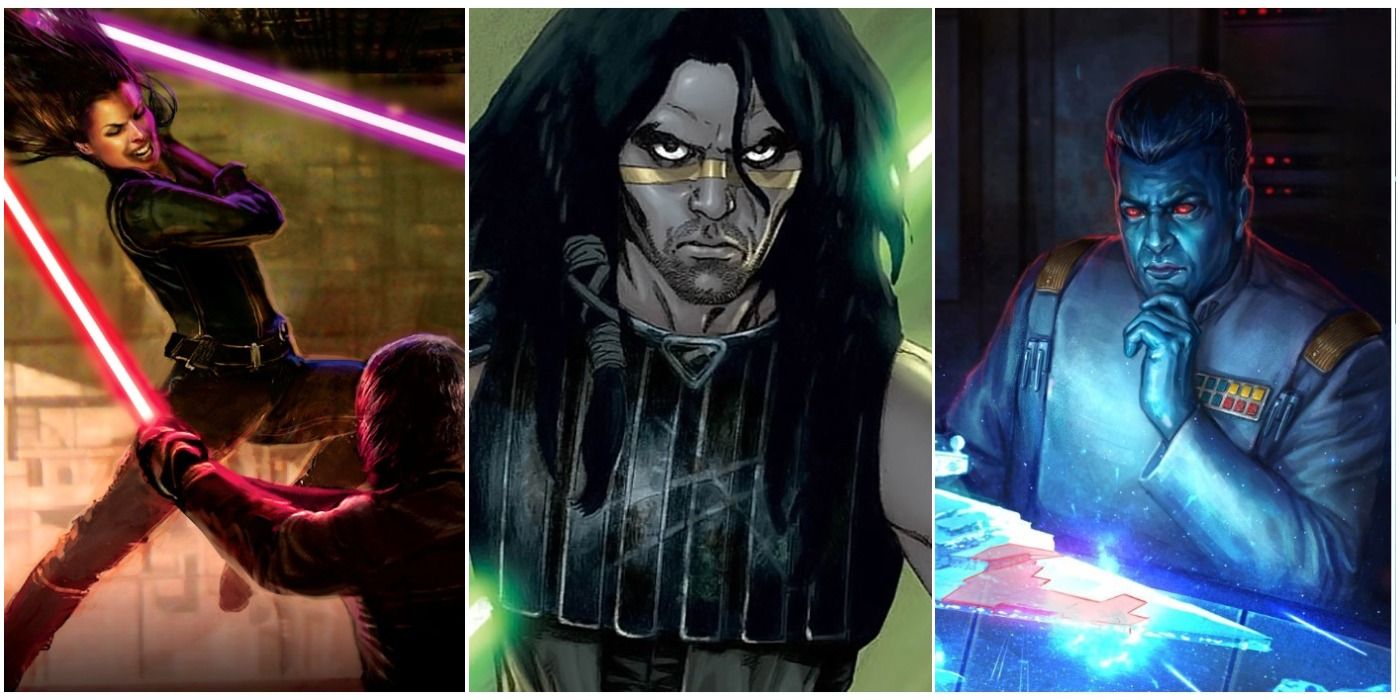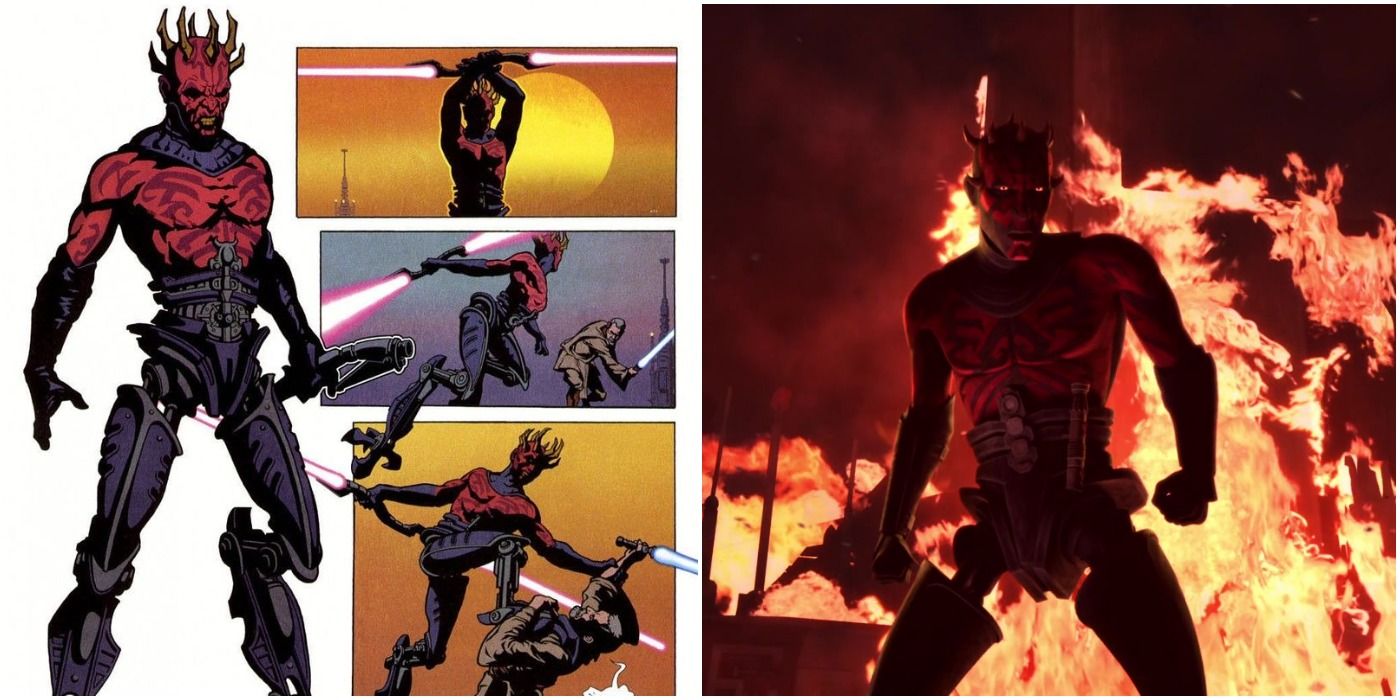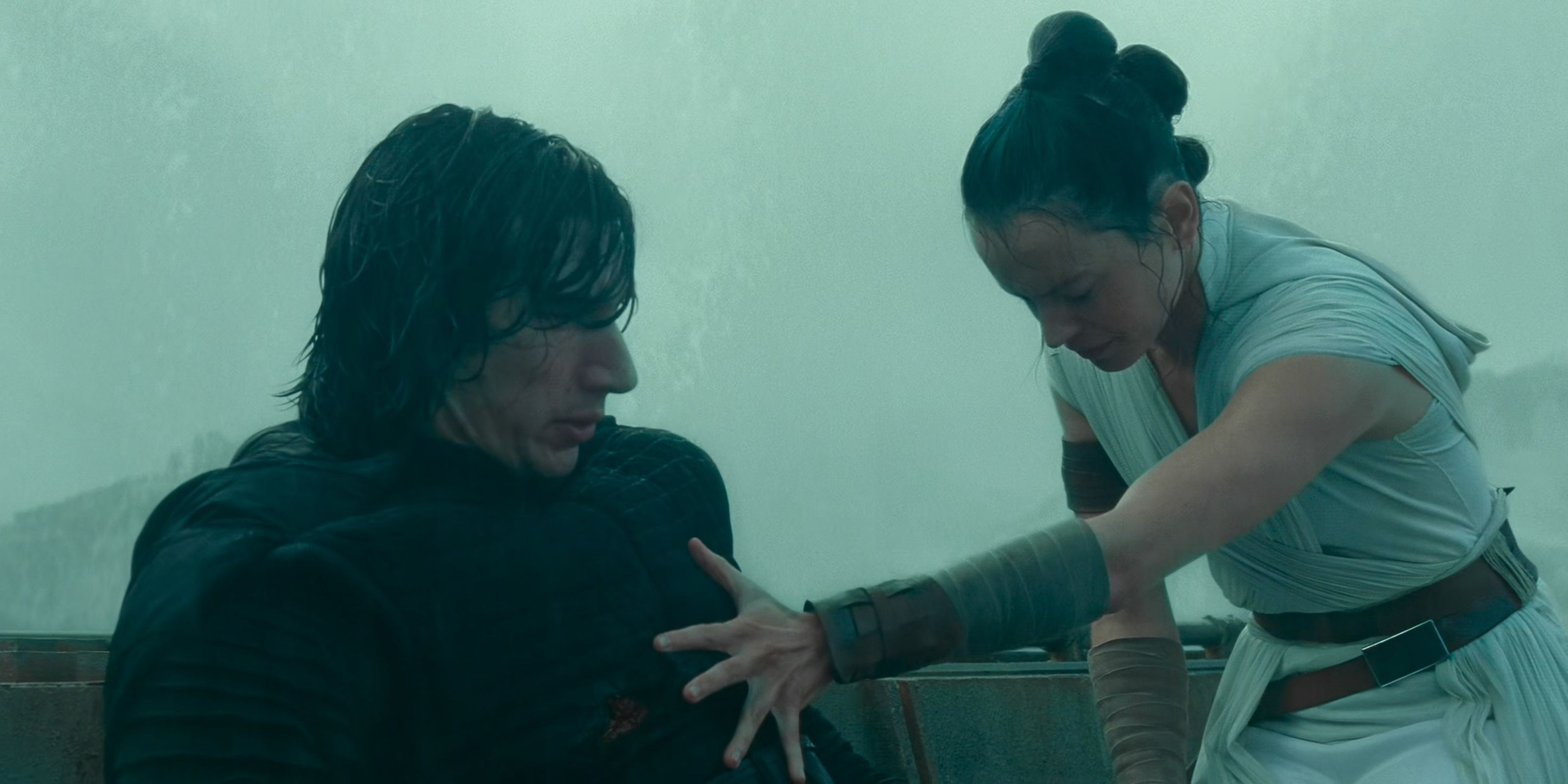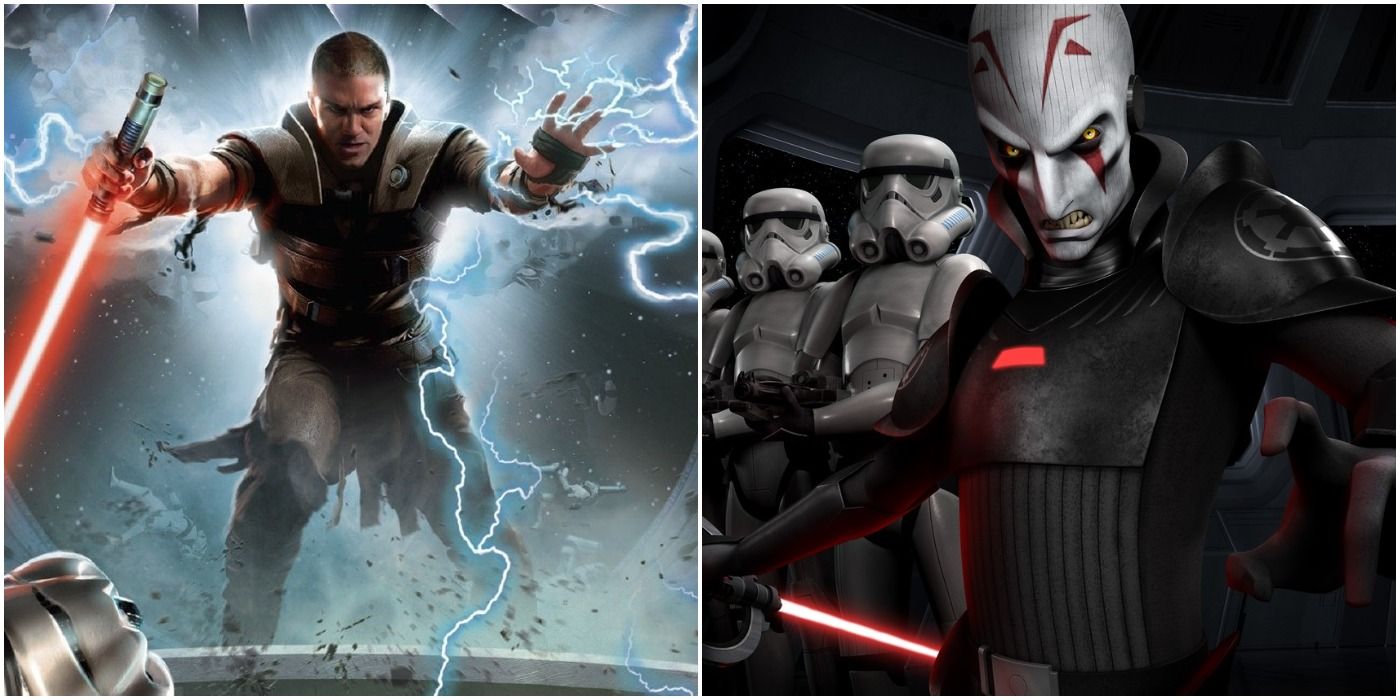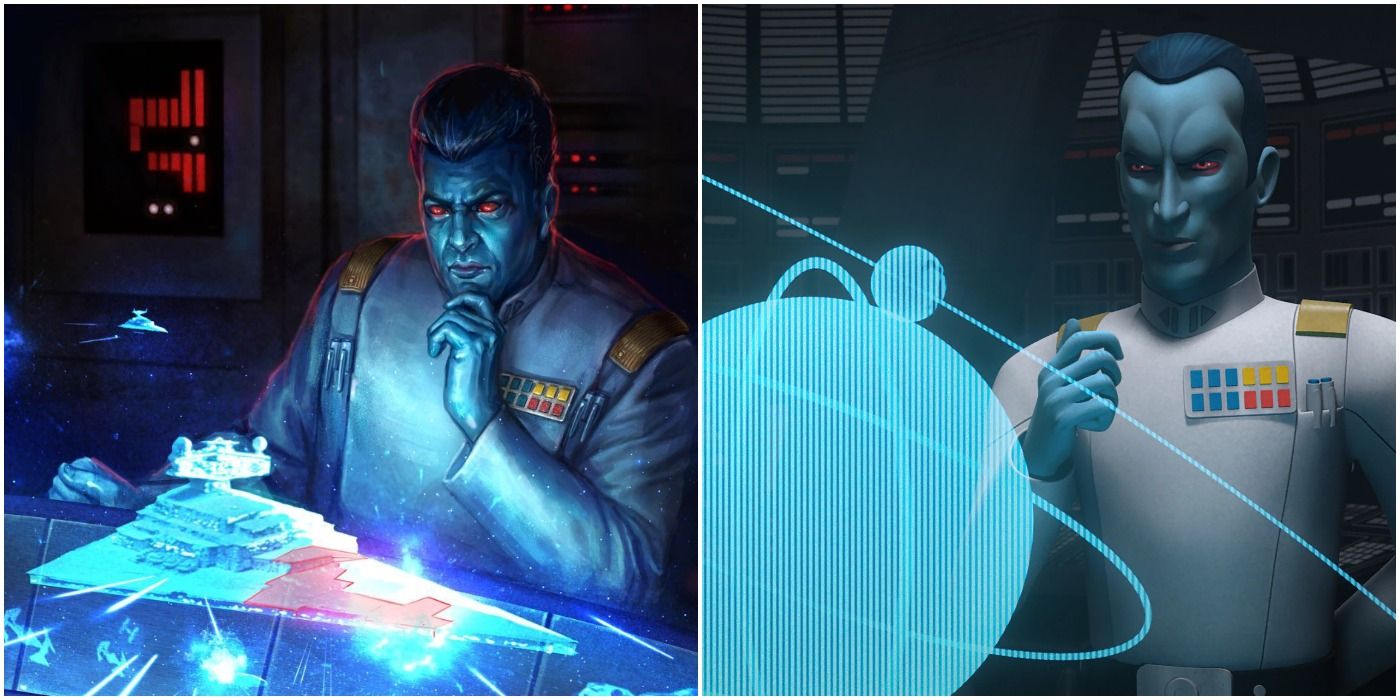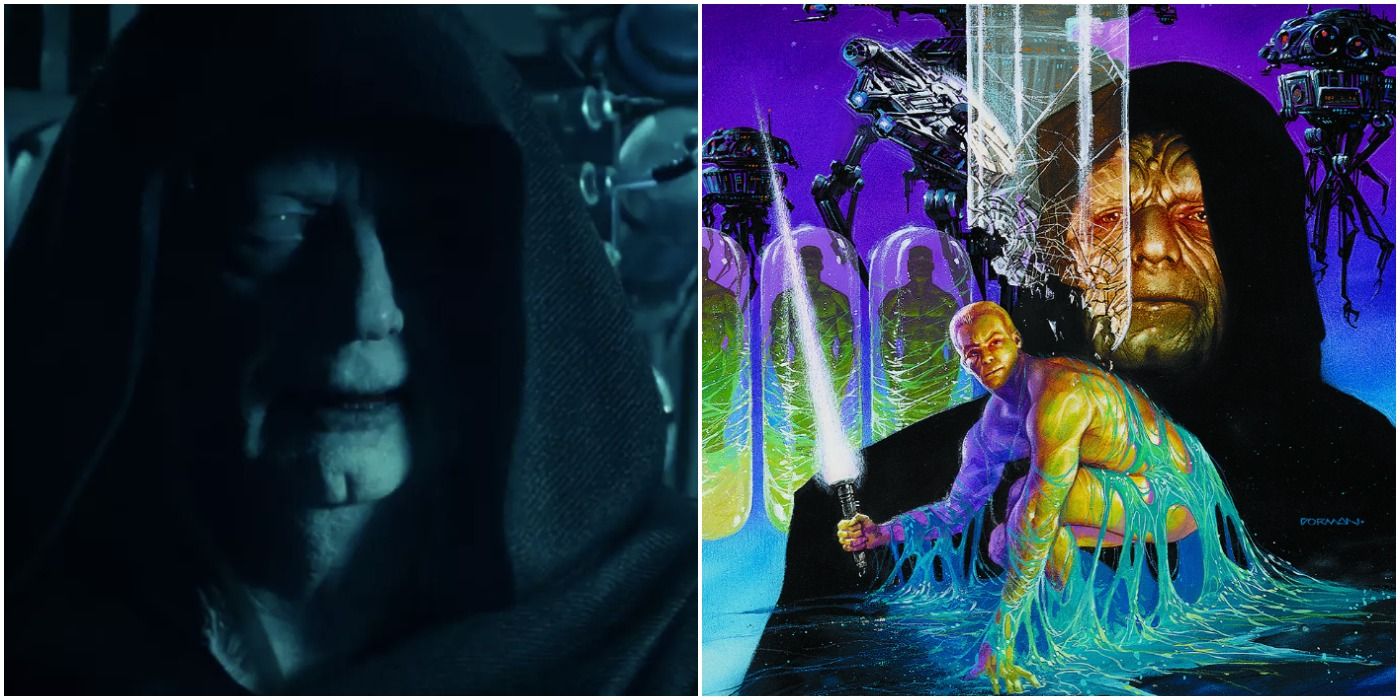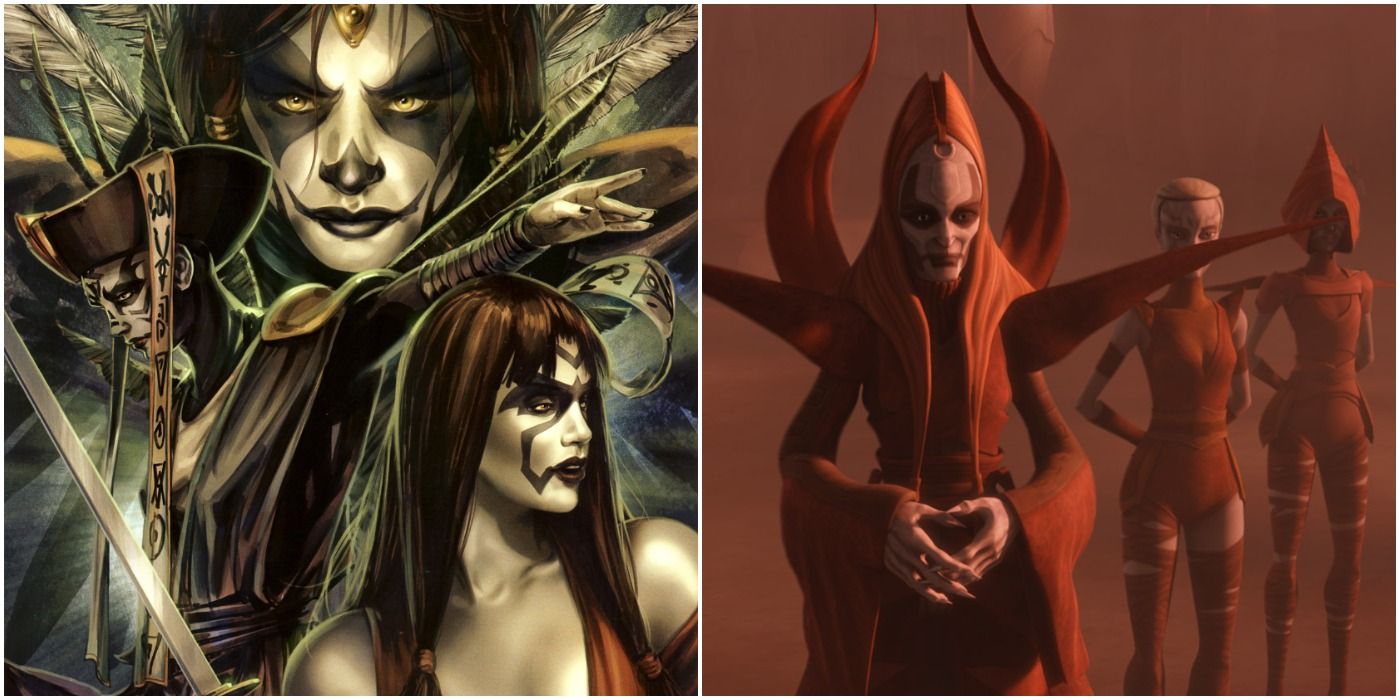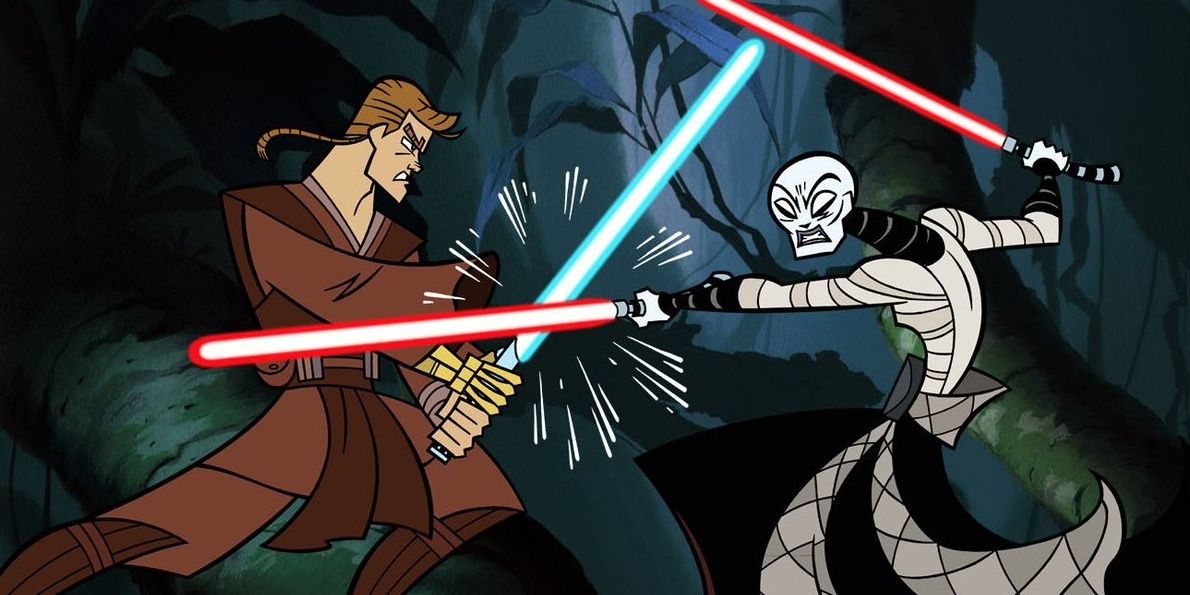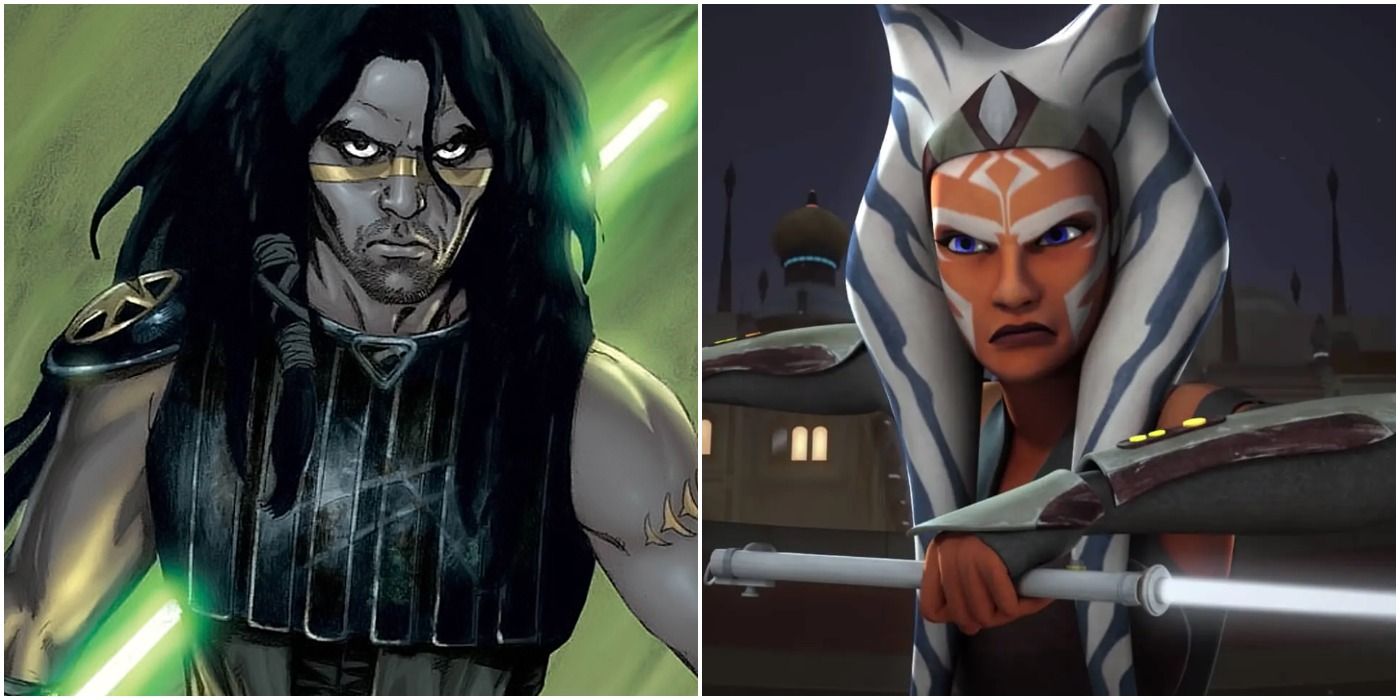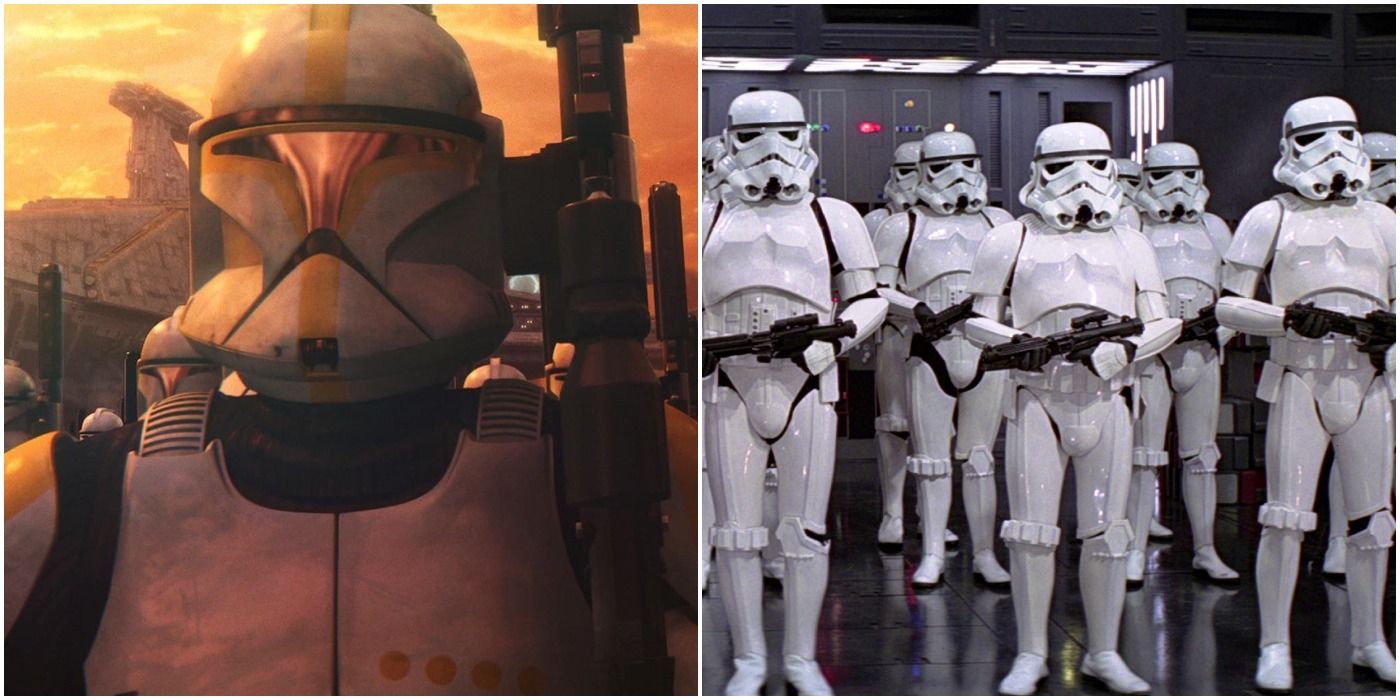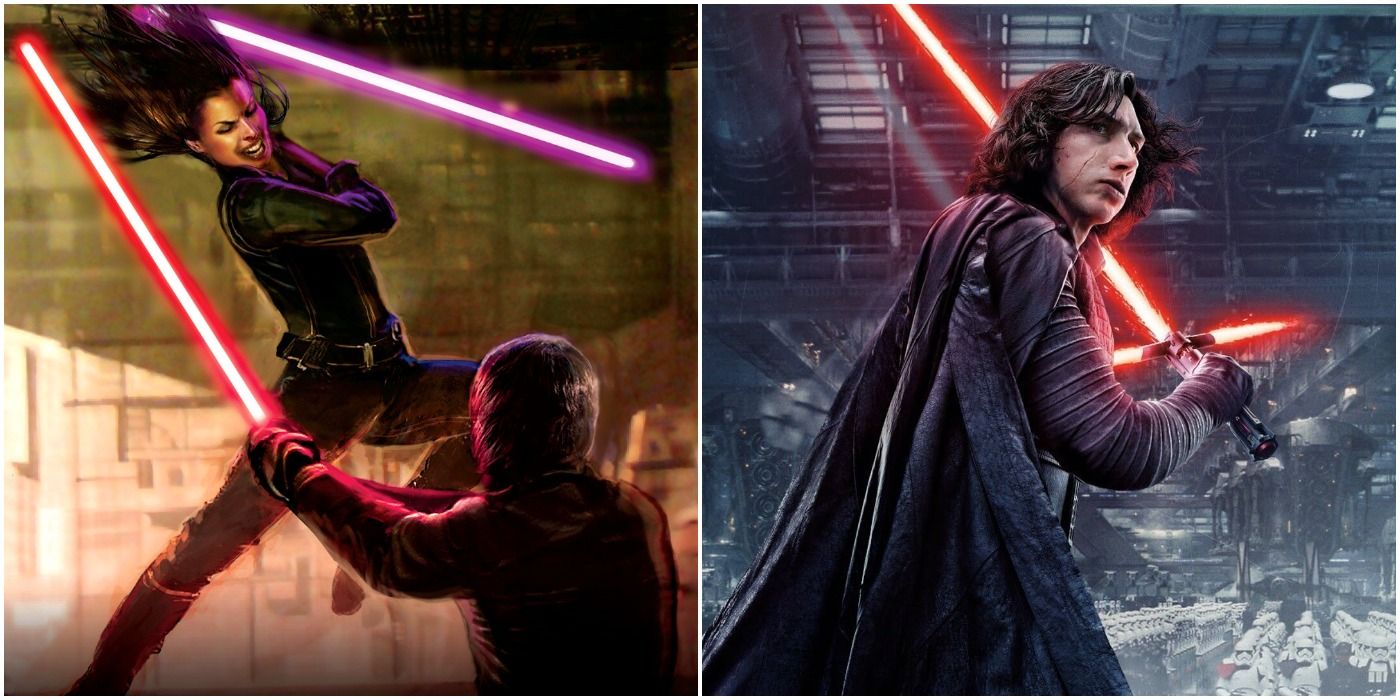They say that nothing is original in entertainment anymore. That even applies to a franchise as fantastical as Star Wars. Despite the vast galaxy at its disposal, this sci-fi series has reused its share of ideas. These mostly come from the Expanded Universe: a collection of comics, novels, games, and TV shows focusing on corners of the Star Wars galaxy not seen in the films. Sadly, this was not to last.
Though the Clone Wars TV show had already plucked ideas from these other sources with several liberties, the Disney acquisition cemented the Expanded Universe as a bunch of alternate tales dubbed "Legends." The "official" canon now comprised the films, The Clone Wars, and any works that Disney put out themselves. However, the EU boasted too many good ideas to go to waste, and the new additions can't help but take note. Some might call it laziness. Others, however, are happy to see these great (and not so great) concepts brought back to the fold.
10 Darth Maul's Robot Legs
This acrobatic assassin was just too cool to die in The Phantom Menace. Not only has he shown up in countless video games, but several comic book writers reinserted him into the original trilogy's era. The most notable is Old Wounds, where Maul returns with clawed, robotic legs and seeks revenge on an older Obi-Wan Kenobi for slicing him in half.
When The Clone Wars resurrected the Sith Lord years later, the creators lifted his design straight from the comics. They didn't stop there, though. Star Wars Rebels later paid homage to Old Wounds by pitting Maul against Old Ben Kenobi. What goes around comes around.
9 Force Healing
One of the many Force abilities that Rey seemingly discovers on her own is the power to heal wounds. None of the movies established this prior to Episode IX. Sure, Baby Yoda can do it in The Mandalorian, but he's not connected to the films.
The games are a different story. Titles like Knights of the Old Republic include Force Healing as an unlockable ability for those pursuing a Light Side path. They had to give more altruistic players something to compete with the flashy Dark Side powers. Maybe that's why Rey is so overpowered: she's secretly a video game character.
8 Darth Vader's Hitmen
Among the more popular Star Wars games is The Force Unleashed. In this hack-and-slash title, Darth Vader trains a secret apprentice--"codenamed Starkiller"--to hunt down the remaining Jedi across the galaxy. Unfortunately, this guy was just too powerful to bring into the new canon. After all, he can demolish entire Star Destroyers and even best the Emperor in a duel.
Enter the Inquisitors. Prominent antagonists in both Star Wars Rebels and Jedi Fallen Order, these assassins fulfill the same function as Starkiller: pursue Jedi on Vader's behalf. They're simply not as strong and undergo extensive brainwashing beforehand. Can't have them getting any funny ideas about rebelling.
7 Grand Admiral Thrawn
Set after the original trilogy, the Heir to the Empire novel needed someone who could fill the power vacuum left by Vader and the Emperor. It found that in Grand Admiral Thrawn. This methodical commander was a master strategist and part-time art collector, devoting himself to understanding the culture and mindset of his enemies. This enabled him to more effectively crush them, and it makes him one of the more refreshing villains in the Expanded Universe.
Although the sequel trilogy negated these tales, the animation folks knew a great villain when they saw one. That's why they brought Thrawn back in Star Wars Rebels, making him the Big Bad of Seasons 3 and 4. Plus, original author Timothy Zahn has returned to crafted new novels featuring the character. Looks like the red-eyed stepchild of the Blue Man Group has seen a resurgence.
6 The Emperor's Cloning Scheme
When Emperor Palpatine returns from death in The Rise of Skywalker, the writers never give a concrete explanation. The villain himself simply chalks it up to Dark Side ability, but one of the Resistance soldiers suggests cloning.
This wouldn't be the first time the Emperor has tried it. The Dark Empire comics see the Sith Lord transferring his consciousness to several clone bodies. He apparently cooked these up as a contingency plan to achieve immortality. Somehow, that's less silly than what the movie churned out.
5 Nightsisters
Originating in the Courtship of Princess Leia novel (not counting the sorceress in the second Ewoks movie), the Nightsisters are a band of female Force-users dwelling on a foreboding forest planet. Although their witchlike aesthetic and tribal culture have remained relatively consistent, their path to the new canon is a little hazy.
The Clone Wars TV show first resurrected the Nightsisters as full-on villains in the Nintendo DS tie-in game, Jedi Alliance. This was during the first season's airing. In Season 3, however, the creators seemingly ignores the game and reboots the witches as a largely neutral coven that's eventually wiped out. This image seems to have stuck since players encounter their remnants during Jedi Fallen Order. Isn't that nice? The writers brought back the Nightsisters just to kill them.
4 The Look Of The Clone Wars
Before The Clone Wars, there was simply Clone Wars. In 2003, Lucasfilm commissioned animation darling Genndy Tartakovsky to create a TV serial about this fictional conflict. Using his stylish visual storytelling and penchant for slick action, these three-to-five-minute segments showcased various Jedi Knights leading the Republic's clones against the Separatists' droids.
Following Revenge of the Sith, George Lucas created the computer-animated Clone Wars that most fans know today. Although it had a heavier focus on dialogue, he suggested the creators use the previous show in crafting the new one's look. That's why it has a similarly stylized, blocky aesthetic. In essence, The Clone Wars owes much of its identity to Tartakovsky.
3 Grey Jedi
This series seems to have a binary view of the universe, emphasizing Light and Dark above all. Occasionally, however, some Force-users walk the line between the two. They don't subscribe to traditional Jedi practices, but nor are they Sith. The loose term for these is "Grey Jedi."
Such nonconformists exist all over the franchise. Quinlan Vos of the comics and Knights of the Old Republic's Jolee Bindo are a couple of examples. Many fans have also labeled the films' Qui-Gon Jinn as one due to his disregard for the Jedi Council. The most recent Grey Jedi is Ahsoka Tano, the former apprentice to Anakin Skywalker who left the Order. Whether she maintains that moral balance remains to be seen in her upcoming show.
2 Replacing Clones With Stormtroopers
One plot thread in the current Bad Batch show deals with this changing of the guard. To cut costs, the Empire stops using clones for their military after the Clone Wars. Instead, they rely on recruits. This retroactively explains why none of the original trilogy's Stormtroopers have Kiwi accents.
Past Star Wars products have offered a different explanation for this shift. 2005's Battlefront II has the cloners on Kamino breed a new army to fight the Empire. After putting down this revolt, the Emperor would understandably opt for an in-house military, albeit one that can't shoot straight.
1 Han And Leia's Kids Turning To The Dark Side
Way to go the predictable route! It turns out that Kylo Ren, the sequel trilogy's main villain, is actually the son of Han Solo and Princess Leia. Originally trained by Luke, young Ben turned toward a darker path and headed a new Empire. That alone is cause for déjà vu, and it doesn't help that its outfit is a dead ringer for Darth Revan's.
The comics and novels give Han and Leia three children: Jacen, Jaina, and Anakin. All of them accomplish several heroic deeds over the years, but Jacen eventually succumbs to the Dark Side. This leads to conflict not only with Mom and Dad (as seen in the films, but also his brother and sister. It takes sibling rivalry to a whole new level. Needless to say, that's a bit more interesting than "Reylo."


